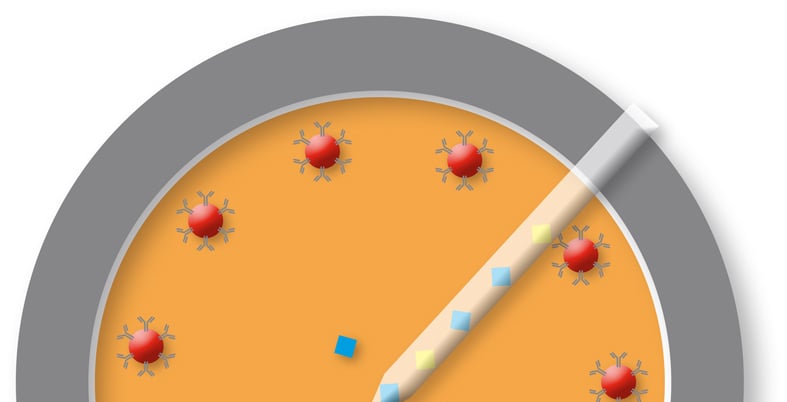Introduction
In the realm of molecular biology and biochemistry, the utilization of magnetic beads has revolutionized experimental workflows, offering efficiency, precision, and versatility in various applications. From nucleic acid purification to protein isolation and beyond, magnetic beads have become indispensable tools for researchers that seek reliable and scalable solutions. This comprehensive guide delves into the fascinating world of magnetic bead technology, and provides insights, tips, and best practices tailored for biologists and biochemists that must navigate the complexities of modern laboratory research.
Understanding Magnetic Bead Technology
Magnetic beads, typically composed of superparamagnetic iron oxide nanoparticles coated with a functionalized surface, exhibit unique magnetic properties that enable an attractive force under the influence of an external magnetic field. These magnetic beads serve as solid supports for biomolecule immobilization procedures, where target cells, antibodies, proteins or even aptamers can be selectively captured and separated from a complex solution. Magnetic beads can be employed to facilitate selective binding, separation, and purification processes with unparalleled efficiency compared to traditional systems
Applications in Molecular Biology and Biochemistry
- Nucleic Acid Purification: Magnetic beads play a pivotal role in nucleic acid extraction and purification protocols and enable the rapid and efficient isolation of DNA and/or RNA from complex biological samples. By leveraging specific binding interactions, researchers can achieve a final product with an increasingly high purity and yield, typically essential for downstream applications such as PCR, genome sequencing, and gene expression analysis.
- Protein Isolation and Immunoprecipitation: In protein research, magnetic beads offer precise control over protein immobilization and purification efforts and can facilitate affinity-based techniques like immunoprecipitation (IP), co-IP, chromatin IP (ChIP), and RNA IP (RIP0. By coupling antibodies or other ligands to the bead surface, researchers can selectively capture target proteins from complex biomolecular mixtures to enable the detailed characterization of the sample and provide information for studies based on the functional nature of the proteins at play.
- Cell Separation and Biomolecule Delivery: Magnetic bead-based cell separation techniques enable the rapid and efficient isolation of specific cell populations from heterogeneous samples, crucial for applications in immunology, stem cell research, and regenerative medicine. Additionally, functionalized magnetic beads serve as vehicles for targeted capture of highly specific biomolecules. These include nucleic acids, proteins, and drugs or active pharmaceutical ingredients, which offers precise control over therapeutic interventions and gene editing strategies.
Best Practices and Tips
- Optimizing Binding Conditions: Understanding the physicochemical properties of magnetic beads and their interactions with target molecules is essential for optimizing the binding conditions in experimentation. Factors such as buffer composition, pH, temperature, and incubation time can significantly impact binding efficiency and specificity.
- Magnetic Separation Techniques: The proper selection and optimization of magnetic separation techniques are critical for achieving efficient isolation and purification of target molecules. Factors such as magnetic force strength, bead concentration, and incubation time should be carefully optimized to maximize the recovery and purity of the final product.
- Quality Control and Validation: Regular quality control assessments, including bead concentration, size distribution, and surface functionalization, are essential to ensure the reproducibility and reliability of experimental results. The validation of appropriate analytical techniques is also crucial to ensure that target products are efficiently purified, to guarantee that a separation procedure provides a substantial product yield, and to provide the ability to interpret data with ease.
- Storage and Handling: The proper storage and handling of magnetic beads are essential for maintaining their stability and performance over time. Storage conditions, including temperature, humidity, and exposure to magnetic fields, should be carefully controlled to prevent unanticipated bead aggregation, degradation of outer coating and/or magnetite within the bead, or loss of magnetic properties.
Conclusion
In the dynamic landscape of molecular biology and biochemistry, magnetic bead technology continues to empower researchers with innovative solutions for diverse applications that require targeted biomolecular isolation. By harnessing the magnetic magic of these versatile beads, biologists and biochemists can unlock new insights into the complex mechanisms underlying biological processes and accelerate advancements in biomedical research and therapeutics. With a solid understanding of the principles, applications, and best practices outlined in this guide, researchers can navigate the intricacies of magnetic bead-based methodologies with confidence and precision and drive impactful discoveries that shape the future of science and medicine.





